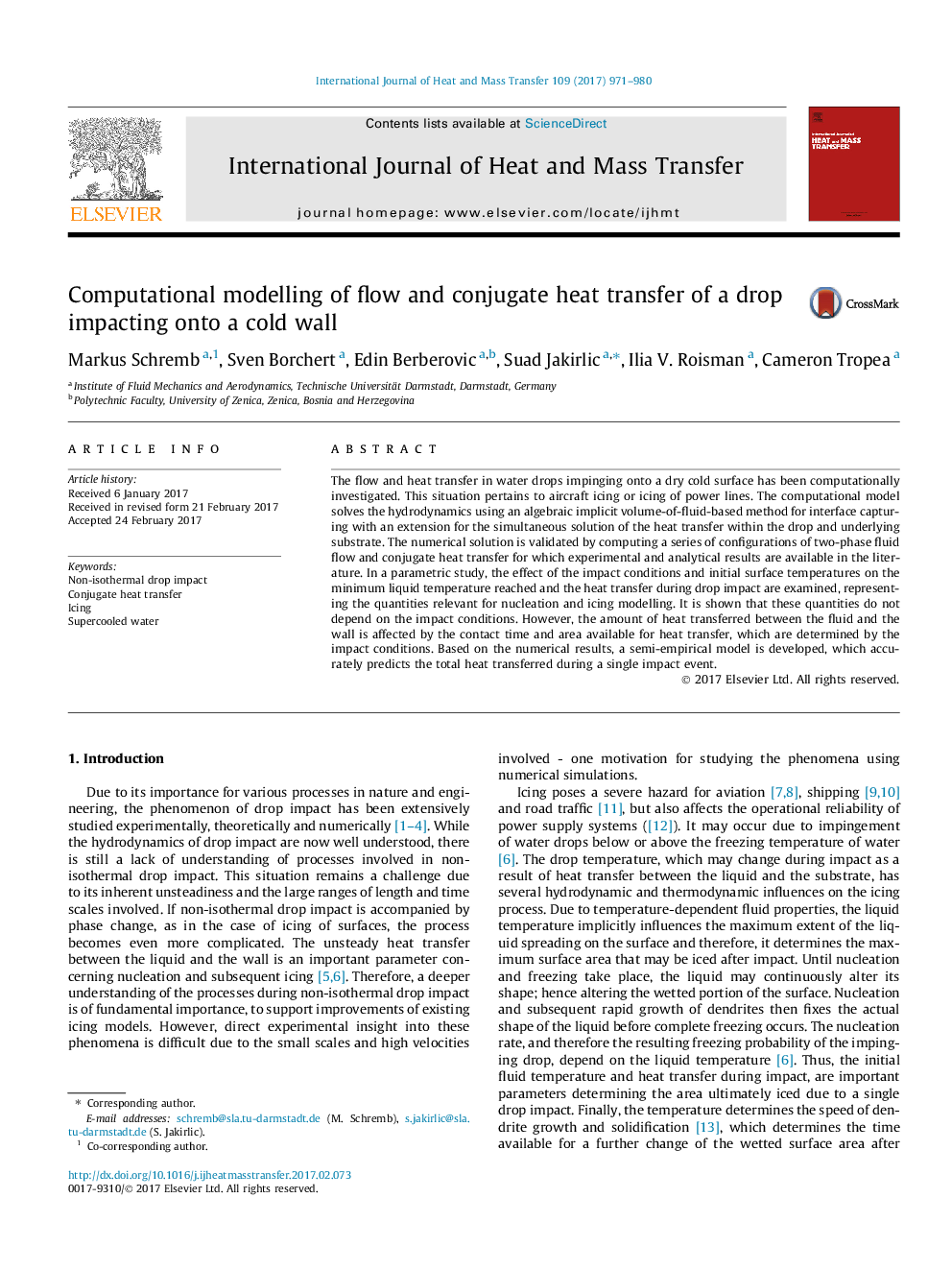| Article ID | Journal | Published Year | Pages | File Type |
|---|---|---|---|---|
| 4994544 | International Journal of Heat and Mass Transfer | 2017 | 10 Pages |
Abstract
The flow and heat transfer in water drops impinging onto a dry cold surface has been computationally investigated. This situation pertains to aircraft icing or icing of power lines. The computational model solves the hydrodynamics using an algebraic implicit volume-of-fluid-based method for interface capturing with an extension for the simultaneous solution of the heat transfer within the drop and underlying substrate. The numerical solution is validated by computing a series of configurations of two-phase fluid flow and conjugate heat transfer for which experimental and analytical results are available in the literature. In a parametric study, the effect of the impact conditions and initial surface temperatures on the minimum liquid temperature reached and the heat transfer during drop impact are examined, representing the quantities relevant for nucleation and icing modelling. It is shown that these quantities do not depend on the impact conditions. However, the amount of heat transferred between the fluid and the wall is affected by the contact time and area available for heat transfer, which are determined by the impact conditions. Based on the numerical results, a semi-empirical model is developed, which accurately predicts the total heat transferred during a single impact event.
Related Topics
Physical Sciences and Engineering
Chemical Engineering
Fluid Flow and Transfer Processes
Authors
Markus Schremb, Sven Borchert, Edin Berberovic, Suad Jakirlic, Ilia V. Roisman, Cameron Tropea,
